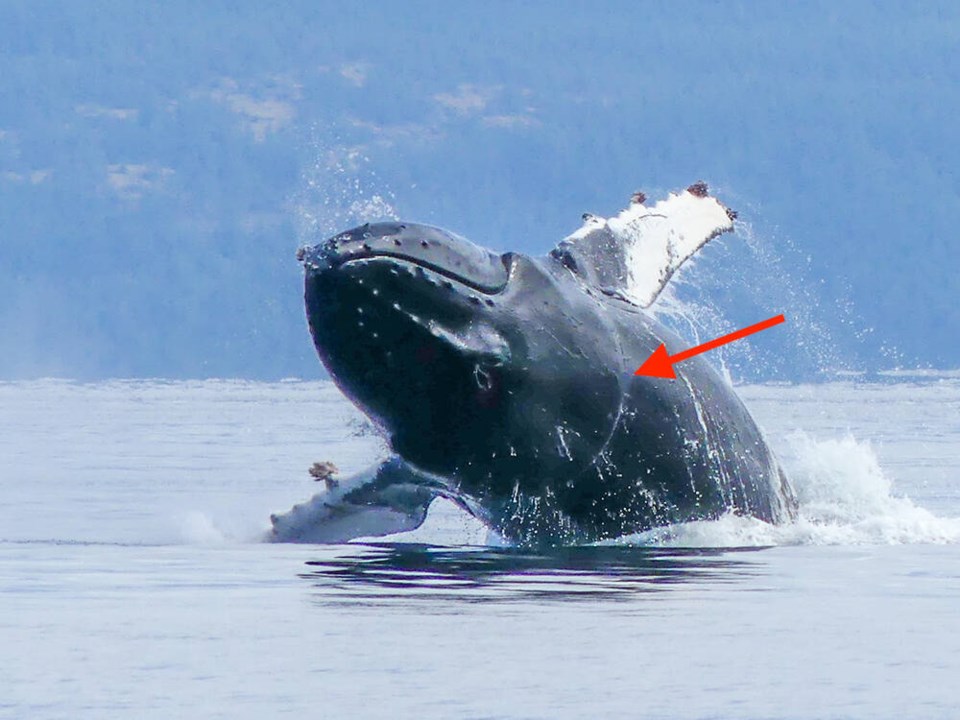A humpback whale is in a potentially lethal predicament somewhere in the Salish Sea with a rope embedded near its blowhole and wrapped hard around its body and dorsal fin.
Vector, a three-year-old male, was last spotted Friday south of Campbell River near Sentry Shoal, but could be anywhere at this point, said Paul Cottrell, head of the Department of Fisheries and Oceans Marine Mammal Unit.
Cottrell said Wednesday the fishing gear wrapped around Vector’s body is “really tight, embedded in the blubber and there’s not a lot of trailing gear, so it’s going to be a really tough one to get at … if we find him.”
The rescue unit was in the mid-Island area Wednesday hoping a sighting would be reported to the DFO line, at 1-800-465-4336. The unit can typically respond within one hour.
Cottrell’s team is also waiting for updated sightings of another humpback in distress. The whale, dubbed Schooner, was reported to have fishing gear on its body and a wound on its fluke that could have been caused by the entanglement or a vessel strike, said Cottrell.
Schooner was last seen in Swanson Channel in the Southern Gulf Islands on June 22, with no new sightings reported since then.
Cottrell said cutting away the rope on Vector could prove difficult in any attempt to free the whale. The lack of trailing rope or prawn or crab traps and buoys make it difficult to attach “working lines” that help to disentangle the gear and to attach tracking devices to monitor the whale’s location.
Rescues can take hours and even days to complete as DFO units have to carefully keep their distance and are frequently delayed by choppy water. Rescuers often deploy drones above the whales to get a close look at knots and wrappings.
“This whale is also very mobile,” said Cottrell. “It’s a really unfortunate and difficult entanglement, but we will try to get a working line on it, and hopefully remove the rope.”
Jackie Hildering of the Marine Education and Research Society said Vector’s entanglement is difficult to see, so the humpback might best be located through the unique markings on its flukes.
Ecotourism operators and marine-mammal monitoring and education program Straitwatch, both familiar with the Canadian Pacific Humpback Collaboration’s identification catalogue, have been alerted.
Hildering said anyone on the water should keep a safe legal distance of at least 200 metres.
She said her society’s research, in collaboration with Fisheries and Oceans, has found that about half of humpbacks have scarring from being entangled at least once in their lives.
“This does not account for those who have died from entanglement and have sunk to the ocean bottom or who have washed up somewhere where they are never detected,” said Hildering.
Cottrell said DFO has already had 10 reports of whales tangled in fishing gear this spring, but none so far have been located.
Hildering said it can be tempting to think that all whales that are entangled will be seen and rescued, “but this will never be the case in B.C.’s vast waters.”
She said more boater education is needed, along with more resources for disentanglement and to understand where and how entanglements are happening to be able to reduce the risk at the source.
Online: HowToSaveAWhale.org
>>> To comment on this article, write a letter to the editor: [email protected]



